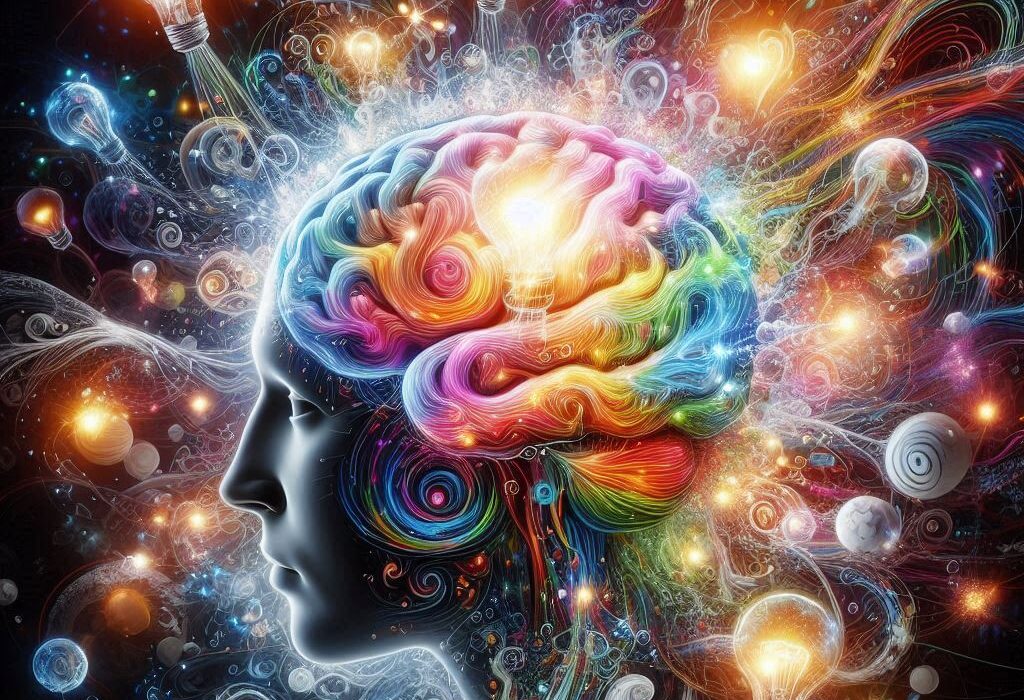Stress and anxiety are deeply ingrained parts of the human experience. They are not merely emotional states but complex biological processes that involve intricate interactions between the brain, body, and environment. When a person feels stressed or anxious, their brain undergoes a series of chemical, electrical, and structural changes designed to help them respond to perceived threats or challenges. These responses evolved as survival mechanisms, enabling early humans to react quickly to danger. However, in the modern world, chronic stress and persistent anxiety can overload these systems, leading to significant effects on both mental and physical health.
Understanding what happens to the brain during stress and anxiety reveals why these emotions can sometimes feel overwhelming and why prolonged exposure can be harmful. It also highlights the remarkable adaptability of the human brain and the potential for recovery through intervention, mindfulness, and therapy.
The Brain’s Stress Response System
The human brain is equipped with a specialized network that detects threats and coordinates the body’s response. This system is primarily managed by the hypothalamic-pituitary-adrenal (HPA) axis, the autonomic nervous system, and several key brain regions including the amygdala, hippocampus, and prefrontal cortex.
When an individual perceives a threat—whether physical, emotional, or psychological—the amygdala, a small almond-shaped structure deep within the brain, becomes activated. The amygdala is central to the processing of emotions, especially fear and anxiety. It acts as an alarm system, detecting danger and signaling other parts of the brain to prepare the body for action.
Once the amygdala senses danger, it sends distress signals to the hypothalamus, which serves as the command center of the stress response. The hypothalamus activates two key systems: the sympathetic branch of the autonomic nervous system and the HPA axis. The sympathetic nervous system triggers the well-known “fight-or-flight” response, rapidly increasing heart rate, blood pressure, and respiration while releasing adrenaline (epinephrine) from the adrenal glands. This immediate surge of energy prepares the body to confront or escape the perceived threat.
Simultaneously, the HPA axis becomes active. The hypothalamus releases corticotropin-releasing hormone (CRH), which stimulates the pituitary gland to secrete adrenocorticotropic hormone (ACTH). ACTH then travels through the bloodstream to the adrenal glands, prompting them to release cortisol, the body’s primary stress hormone. Cortisol helps maintain fluid balance, regulate blood pressure, and ensure the body has enough energy by increasing glucose availability.
Under normal circumstances, once the threat passes, the brain signals the body to return to a balanced state. Cortisol levels drop, heart rate slows, and energy use normalizes. However, when stress becomes chronic or anxiety remains unresolved, this system stays activated for prolonged periods, leading to profound effects on the brain and body.
The Amygdala: The Brain’s Fear Center
The amygdala plays a pivotal role in detecting threats and generating fear and anxiety responses. In stressful situations, the amygdala becomes hyperactive, interpreting stimuli as potentially dangerous and triggering the body’s defense mechanisms.
During acute stress, this heightened activity is beneficial—it ensures rapid reactions that might be necessary for survival. However, in chronic stress or anxiety disorders, the amygdala remains overactive even in the absence of real threats. This constant state of alarm can make individuals more sensitive to stressors, perceiving danger where none exists.
Research using brain imaging techniques has shown that people with chronic anxiety or post-traumatic stress disorder (PTSD) often exhibit increased amygdala activity. This overactivation can lead to a feedback loop where the brain continually interprets neutral or ambiguous cues as threatening, maintaining high levels of physiological arousal.
The amygdala’s overactivity also affects other brain regions, particularly the prefrontal cortex and hippocampus, disrupting cognitive control and emotional regulation. As a result, individuals may find it difficult to calm down, think rationally, or differentiate between real and imagined threats.
The Prefrontal Cortex: The Rational Regulator
The prefrontal cortex (PFC), located in the front of the brain, is responsible for higher-order thinking, decision-making, and emotional regulation. It acts as a counterbalance to the amygdala, helping to assess whether a perceived threat is real and deciding on an appropriate response.
Under normal conditions, the PFC evaluates the situation and can suppress or modulate the amygdala’s fear response if the threat is determined to be minor or non-existent. However, during stress, especially chronic stress, the PFC’s activity decreases. Elevated cortisol levels and constant activation of the stress response impair the PFC’s ability to function effectively.
When the PFC is underactive, emotional control weakens, and impulsive or fear-driven behaviors become more likely. This helps explain why individuals under stress may make poor decisions, experience difficulty concentrating, or react irrationally. In anxiety disorders, this impaired communication between the PFC and the amygdala results in excessive worry and intrusive thoughts that the individual cannot easily dismiss.
Furthermore, long-term exposure to high cortisol levels can actually alter the structure of the PFC. Studies have shown that chronic stress can reduce the density of neurons and the number of synaptic connections in this region, potentially leading to long-term changes in cognition and emotional control.
The Hippocampus: The Memory and Context Center
The hippocampus, another key brain region, is essential for learning, memory, and contextual understanding. It helps differentiate between safe and dangerous situations by integrating past experiences with present circumstances. During stress, the hippocampus works closely with the amygdala and prefrontal cortex to regulate the emotional response.
However, chronic stress and prolonged exposure to cortisol can damage the hippocampus. High cortisol levels reduce neurogenesis (the growth of new neurons) and can shrink the size of hippocampal structures. This results in memory problems, difficulty learning, and impaired ability to contextualize fear.
For example, an individual who has experienced a traumatic event may find that their hippocampus cannot properly distinguish between past and present threats. As a result, neutral situations may trigger anxiety responses similar to those experienced during the original trauma. This phenomenon is often observed in PTSD, where intrusive memories and flashbacks are common symptoms.
The hippocampus also plays a critical role in terminating the stress response. When it functions properly, it sends feedback to the hypothalamus to stop the release of stress hormones once a threat has passed. Damage or dysfunction in the hippocampus disrupts this feedback loop, allowing cortisol levels to remain elevated and perpetuating the cycle of stress.
Neurochemical Changes During Stress and Anxiety
The brain communicates through a complex network of neurotransmitters—chemical messengers that transmit signals between neurons. Stress and anxiety significantly alter the balance of these chemicals, leading to changes in mood, cognition, and behavior.
During stress, the levels of catecholamines such as adrenaline, noradrenaline, and dopamine increase. These neurotransmitters heighten alertness, sharpen focus, and prepare the body for quick action. While this surge can be beneficial in short bursts, prolonged elevation leads to exhaustion, irritability, and difficulty concentrating.
Cortisol, released by the adrenal glands, also plays a central role in the neurochemical response to stress. It influences nearly every organ system in the body and has powerful effects on the brain. Moderate levels of cortisol enhance memory and attention, but chronic elevation impairs these functions and damages neurons, particularly in the hippocampus and prefrontal cortex.
Serotonin, a neurotransmitter associated with mood regulation, is often disrupted during chronic stress and anxiety. Low serotonin levels are linked to depression and anxiety disorders, contributing to feelings of sadness, fear, and hopelessness. Similarly, gamma-aminobutyric acid (GABA), the brain’s primary inhibitory neurotransmitter, helps calm neural activity. When GABA levels drop due to chronic stress, neural circuits become overexcited, leading to persistent anxiety and difficulty relaxing.
Dopamine, which regulates motivation and reward, can also become dysregulated under chronic stress. This may contribute to anhedonia—the inability to feel pleasure—which is often observed in stress-related conditions such as depression and burnout.
Structural and Functional Brain Changes
Chronic stress and anxiety do not only affect brain chemistry; they can also lead to measurable structural and functional changes. Neuroimaging studies have shown that long-term stress is associated with shrinkage in the prefrontal cortex and hippocampus, and increased volume or activity in the amygdala.
These changes reflect a shift in brain function from cognitive control toward heightened emotional reactivity. Essentially, the brain becomes wired for survival mode, prioritizing rapid threat detection over careful reasoning. While this adaptation is useful in short-term emergencies, it becomes maladaptive in everyday life.
Moreover, stress can affect the brain’s connectivity. The communication pathways between the amygdala, hippocampus, and prefrontal cortex become altered, reducing the brain’s ability to regulate emotions effectively. Chronic activation of the HPA axis also affects myelination—the process that insulates neural fibers—potentially slowing neural communication.
Over time, these changes can become self-reinforcing. A stressed brain becomes more sensitive to future stressors, creating a vicious cycle of anxiety and overreaction. However, the brain also possesses remarkable plasticity—the ability to rewire itself—which means that recovery and healing are possible through lifestyle changes, therapy, and stress management practices.
The Difference Between Stress and Anxiety
While closely related, stress and anxiety are not identical. Stress is a physiological and psychological response to an external challenge or demand. It is typically short-term and subsides once the situation resolves. Anxiety, by contrast, often persists even in the absence of an immediate threat. It involves a state of chronic apprehension and worry, rooted in the anticipation of potential danger rather than its direct presence.
In the brain, both activate similar regions and systems, particularly the amygdala and HPA axis. However, anxiety involves more persistent activation of these systems and greater involvement of brain areas responsible for anticipation and prediction, such as the prefrontal cortex and anterior cingulate cortex.
Chronic anxiety can lead to the same detrimental effects as prolonged stress, including structural changes in key brain regions, impaired memory, and increased vulnerability to mental health disorders such as depression.
The Role of the Autonomic Nervous System
The autonomic nervous system (ANS) operates largely outside conscious control and regulates vital bodily functions such as heart rate, digestion, and respiration. It consists of two branches: the sympathetic nervous system (SNS) and the parasympathetic nervous system (PNS).
During stress, the SNS activates the “fight-or-flight” response, releasing adrenaline and increasing heart rate, blood pressure, and energy availability. Once the stressor passes, the PNS, often referred to as the “rest-and-digest” system, works to restore balance by slowing the heart rate and promoting relaxation.
However, in chronic stress or anxiety, this balance is disrupted. The sympathetic system remains dominant, keeping the body in a state of constant alertness. This prolonged activation contributes to physical symptoms such as tension, fatigue, gastrointestinal issues, and sleep disturbances, while also reinforcing psychological anxiety.
How Chronic Stress Affects Mental Health
Prolonged exposure to stress hormones like cortisol can have profound effects on mental health. Elevated cortisol levels are associated with increased risk of depression, anxiety disorders, and cognitive decline. The combination of hippocampal shrinkage, prefrontal dysfunction, and amygdala hyperactivity creates a neurobiological environment that predisposes individuals to emotional instability and negative thinking.
Chronic stress also disrupts the brain’s reward circuitry, reducing motivation and enjoyment of everyday activities. This can lead to withdrawal, hopelessness, and symptoms of burnout. Additionally, stress impairs sleep, which in turn exacerbates anxiety and cognitive impairment. Over time, these effects can create a self-perpetuating cycle that is difficult to break without intervention.
Neuroplasticity and Recovery
Despite the damaging effects of chronic stress and anxiety, the brain retains a remarkable ability to recover through neuroplasticity—the process by which neural pathways reorganize and adapt in response to experience and training. Reducing stress, practicing mindfulness, engaging in regular physical exercise, and receiving therapy can promote the growth of new neurons, strengthen connections in the prefrontal cortex, and restore balance between the brain’s emotional and rational systems.
Mindfulness meditation, for example, has been shown to decrease amygdala activity and enhance prefrontal regulation, improving emotional control. Exercise stimulates the release of brain-derived neurotrophic factor (BDNF), a protein that supports the growth and survival of neurons, particularly in the hippocampus. Adequate sleep and social connection also play vital roles in restoring neural function and resilience.
The Future of Stress and Anxiety Research
Modern neuroscience continues to uncover new insights into how stress and anxiety reshape the brain. Advanced imaging technologies and molecular research are revealing that genetic, environmental, and developmental factors interact in complex ways to determine individual vulnerability or resilience.
Emerging therapies, including neurofeedback, transcranial magnetic stimulation (TMS), and pharmacological interventions targeting specific neurotransmitter systems, hold promise for treating chronic anxiety and stress-related disorders. Researchers are also exploring the role of the gut-brain axis and the microbiome in regulating emotional and stress responses, suggesting that mental health may be influenced as much by the body as by the brain.
Conclusion
The experience of stress and anxiety is deeply rooted in the brain’s biology. When we face a challenge or perceive danger, the brain’s ancient survival mechanisms engage a powerful network of chemical and neural responses designed to protect us. Yet, in the modern world, where threats are often psychological and persistent, this same system can become overactivated, leading to chronic stress, anxiety, and emotional exhaustion.
Understanding what happens in the brain during stress and anxiety helps explain why these states feel so overwhelming and why they can have lasting impacts on health. It also offers hope—because the brain is not static. Through awareness, therapy, lifestyle change, and supportive environments, the stressed or anxious brain can heal and adapt.
Ultimately, the story of stress and anxiety is not only one of vulnerability but also of resilience. The same brain that generates fear is also capable of self-regulation, growth, and recovery. By understanding its mechanisms, we move closer to mastering the balance between survival and serenity—a balance that defines the human experience.






